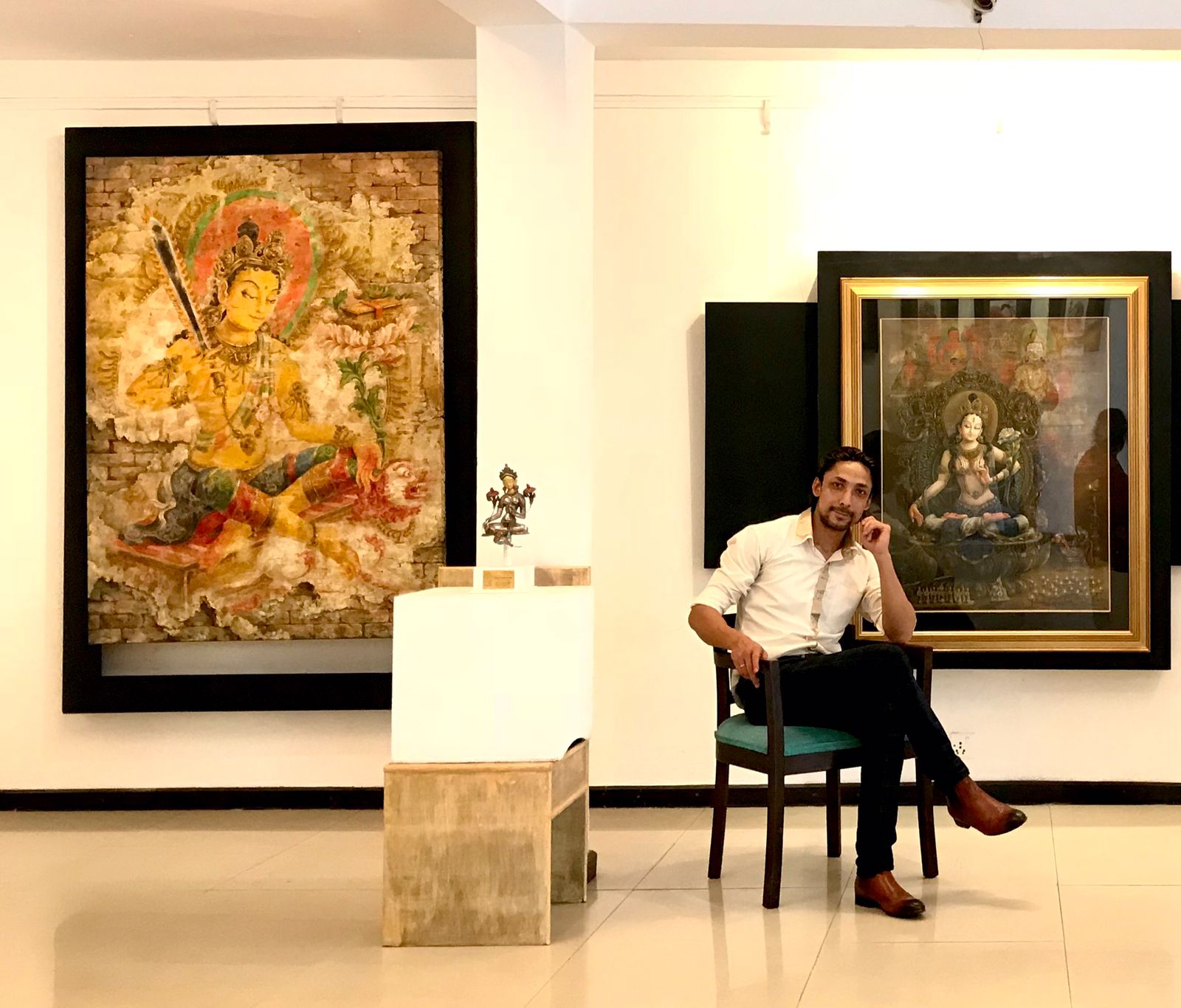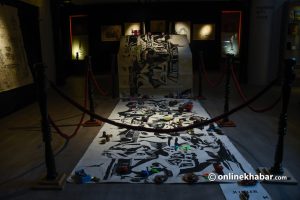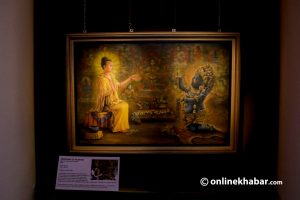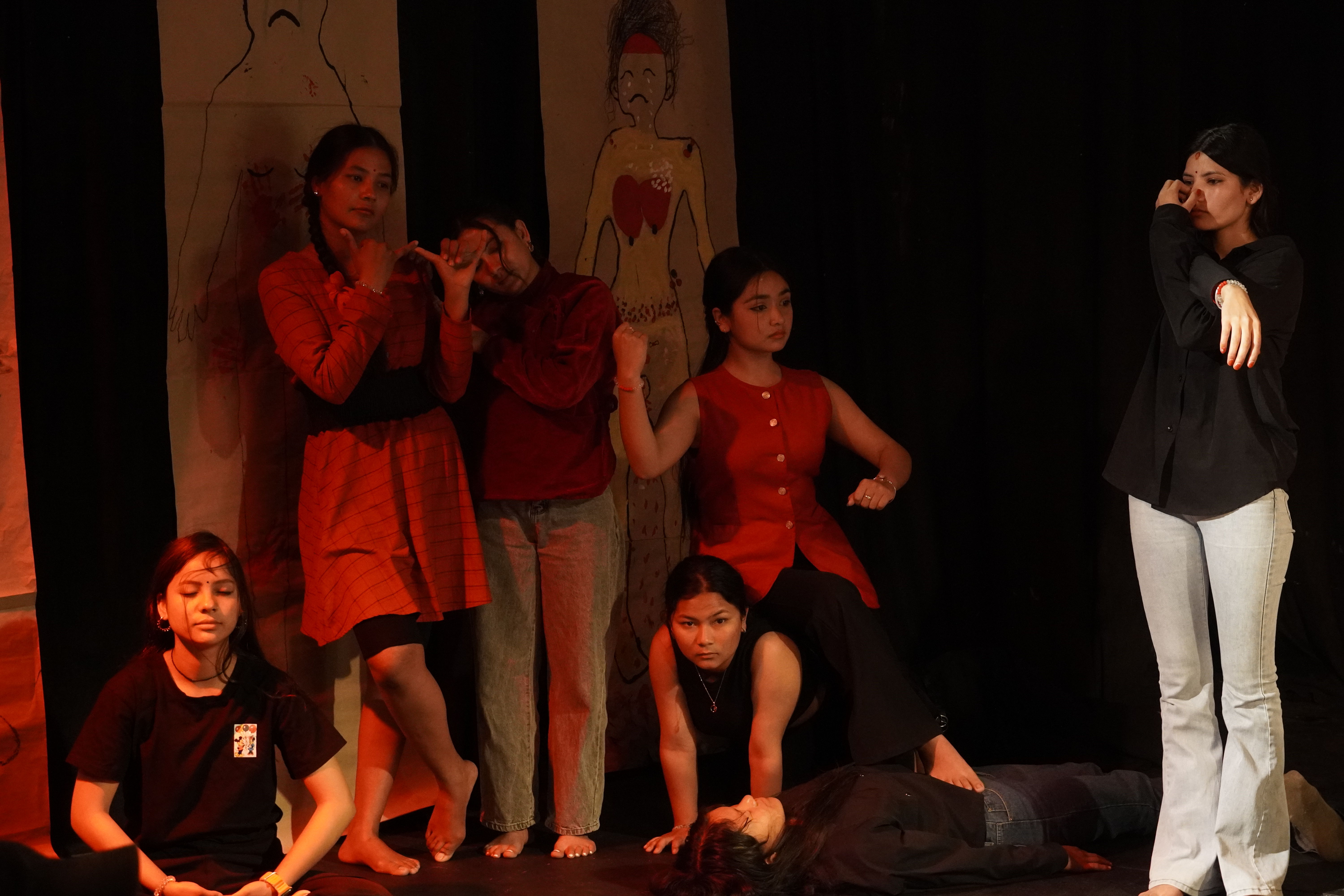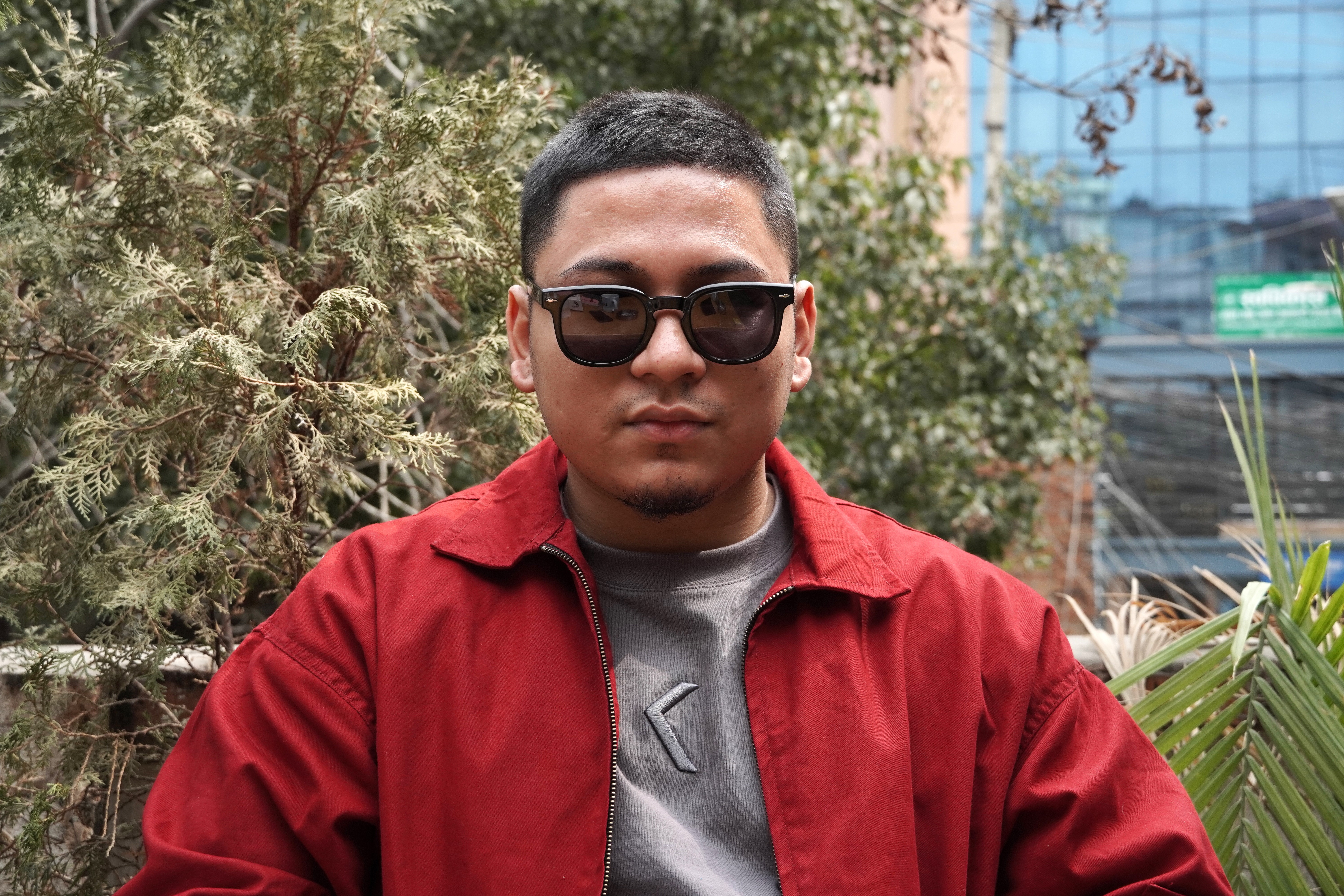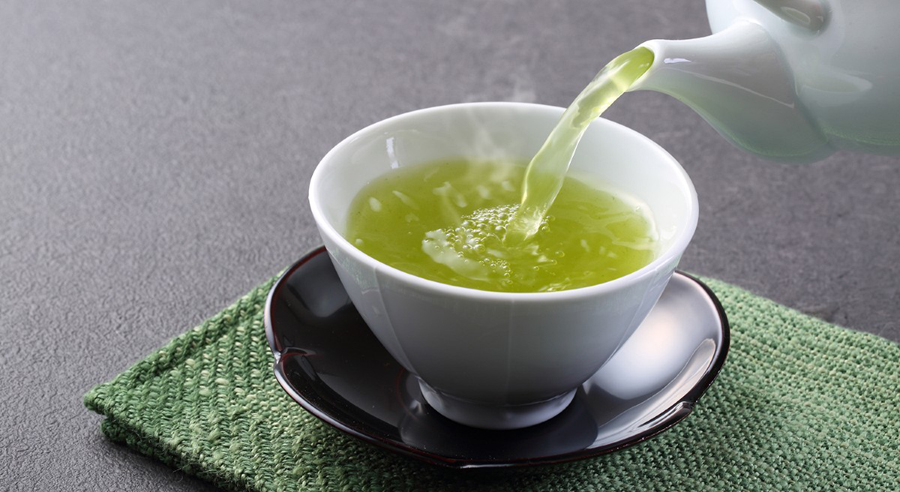Samundra Man Singh Shrestha is not a household name in Nepal. But, if you ask an art lover who he is, they will tell you how great a traditional artist Shrestha is.
His greatness can be seen by the paintings on display at the Museum of Nepali Art (MoNA). Out of all the artworks at MoNA, Shrestha’s Green Tara stands out the most. The way he has visualised the protector goddess is simply breathtaking. Even though it is a little modern, he has still used the traditional flavour to create a painting that even the founder of MoNA is in awe of. “The Green Tara is to MoNA what the Mona Lisa is to Louvre. It’s a masterpiece by one of the great artists of Nepal,” says Rajan Sakya, MoNA founder.
The manner in which Samundra Man Singh Shrestha blends the past and present in his paintings is something not many do in Nepal and that has made him unique.
Retrospecting self to move forward

To show how he got to where he currently is, Shrestha is planning an exhibition at MoNA from February 6 to 19* when he wants to showcase art that he did from his childhood. Through this, he wants to inspire a new era of artists and show them how they can still improve.
“This exhibition is about retrospection. I showcased my best paintings in 2016; this time I want to do something different and maybe inspire a young generation from not giving up,” says Shrestha.
He says there will be around 50 to 60 artworks that range from works done as a teenager to his early years as a struggling artist in Kathmandu. It aims to show people how much Samundra Man Singh Shrestha has grown as an artist as he aims to give people hope that all is not lost.
He got into art when he was a child. He loved to draw and imitate characters he would see in comics or the TV. While his parents were not keen on him being an artist, his uncles saw his passion for art and sent him to legendary artist Prem Man Chitrakar.
Back then, there were no institutes to learn art, let alone traditional art. It was only the Chitrakar clan that did art and you had to go to them to learn. But, not everyone taught it openly. Shrestha was lucky that Prem Man Chitrakar did and he learned how to start doing traditional art by painting Lord Ganesh.
“Maybe it was the faith I had that pulled me into traditional art and maybe that’s why I started out with painting Lord Ganesh,” he says.
For the next few years, Samundra Man Singh Shrestha continued learning from Chitrakar. He learned the idea behind paubha and thangka paintings but along with that, he continued landscape and portraits too.
In 1997, after completing school, he won a national award for a traditional art he had done and since then he knew that this is what he really wanted to do.
“It motivated me a lot. It showed me what was possible if I really put my mind to art. I think that award gave me a motive.”
Getting strength out of struggles

However, the art scene back in the 90s and early 00s was not as great it is now. There were hardly any Nepali art collectors and most of the paintings were sold to foreigners. And, it was not the artist who sold to them. The artists sold to shops in Thamel and they would rarely give the price demanded by the artist but sell them to tourists for the price they wanted to.
“People who appreciated art were less. That hurt the scene because it would discourage young artists like me. When people don’t buy your art, you feel devalued and that causes serious doubts about if you were on the right path.”
But, Samundra Man Singh Shrestha was adamant. He had found his calling and passion. Hence, he did not listen to anyone who tried to discourage him from practicing art. His peers told him he was wasting his time. Even his parents were not supportive as they wanted him to do something that had a future.
“They used to tell me if I wanted to spend my life painting number plates and hoarding boards. It was hurtful, but I had a clear goal on what I wanted to achieve in life.”
This was coupled with shops in Nepal not wanting to buy landscape art from young Shrestha. Even though his traditional paintings did sell, not being able to sell his other works discouraged him.
“I really felt I was not good enough and that pushed me to get better.”
As time passed, Samundra Man Singh Shrestha started to get better at his trade. With time, he started to get the recognition he deserved. His paintings started to be sought after by people from around the world.
But, he still wanted to stand out. He had been doing paubha paintings for over a decade, but he felt that he could not call these paintings his own. He felt he was imitating the works done by painters before his time.
“I wanted my work to stand out. I wanted to create an art piece that no one had done. In that way, I wanted to leave behind a legacy.”
Doing the same thing differently

However, trained in paubha and thangka, Samundra Man Singh Shrestha had too much respect for the art form to forget his roots. Even his new paintings have the same essence that a paubha or a thangka has. The iconography is the same. It is only the style that is different.
“Take the Green Tara for example. Almost all Green Taras are the same. She is green in colour and has a specific posture. You will find that her right hand is giving the mudra of generosity and her left hand has a blue lotus. Along with that, her right leg outstretched, ready to spring into action when needed.”
But, Shrestha’s Tara is different. While its base is the same, visually, it is quite different from the Taras seen on paubhas and thangkas. He has not followed the notion and painted Green Tara in his own way. He has designed her jewellery in an iconic manner and used the oil paint in such a realistic manner that you cannot find anything bad to say about this work.
It is not just the Green Tara; Samundra Man Singh Shrestha has other iconic paintings too. Take the one where he has cut out the main deity from his painting to show empty shrines of gods that were stolen from Nepal. Another iconic painting sheds light on the need for the reconstruction of heritage monuments in the country.
“Paintings need to have emotions, and that is what I want to pour out in my paintings,” he says.
Late Dina Bangdel called his work neo-traditional as she understood that it would be foolish to not put it in the traditional bracket. Other art critics also find his work unique thanks to how he communicates his complex ideas. His fame has reached far beyond Nepal as people from all over the world want his paintings. But lately, he does not want to sell to people abroad as he wants them to remain in Nepal itself.
“I want my art to remain in Nepal. This way people will be able to see what artists in Nepal are doing.”
The February event will be Samundra Man Singh Shrestha’s second solo exhibition. For traditional artists, solo exhibitions are rare because most of their work is bought by foreigners. That makes it impossible for these artists to assemble their work and showcase it for art lovers in the country. Shrestha says he has been lucky in that regard as his work is being bought in Nepal and that has helped him curate exhibitions.
“People in Nepal are starting to appreciate art. Thanks to globalisation and interior designers, people want to put artwork on their living room walls. While this was done only by the rich back then, others are also starting to take interest in art; that is good for the scene.”
*The exhibition dates are subject to change due to the ongoing Covid-19 restrictions.



